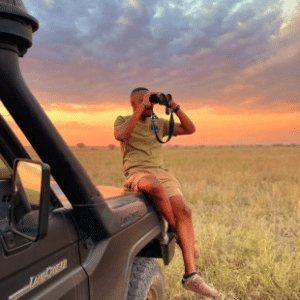The optimal time to visit Tanzania for a safari is June to March. During these months, the weather is warm, dry, and consistent, creating perfect conditions for wildlife viewing. This period also coincides with the thrilling ‘Great Migration,’ a must-see for wildlife enthusiasts.
Tanzania has two main safari seasons: the high season and the low season. The high season is prime for safari tours and is the busiest time for tourists due to excellent weather and wildlife viewing opportunities. Conversely, the low season, from March to May, brings rain and fewer crowds, offering a more exclusive safari experience.
Both seasons have unique attractions, but our safari experts at Great Image Expedition suggest visiting during the high season. This is when Tanzania’s wildlife and landscapes are at their most magnificent.
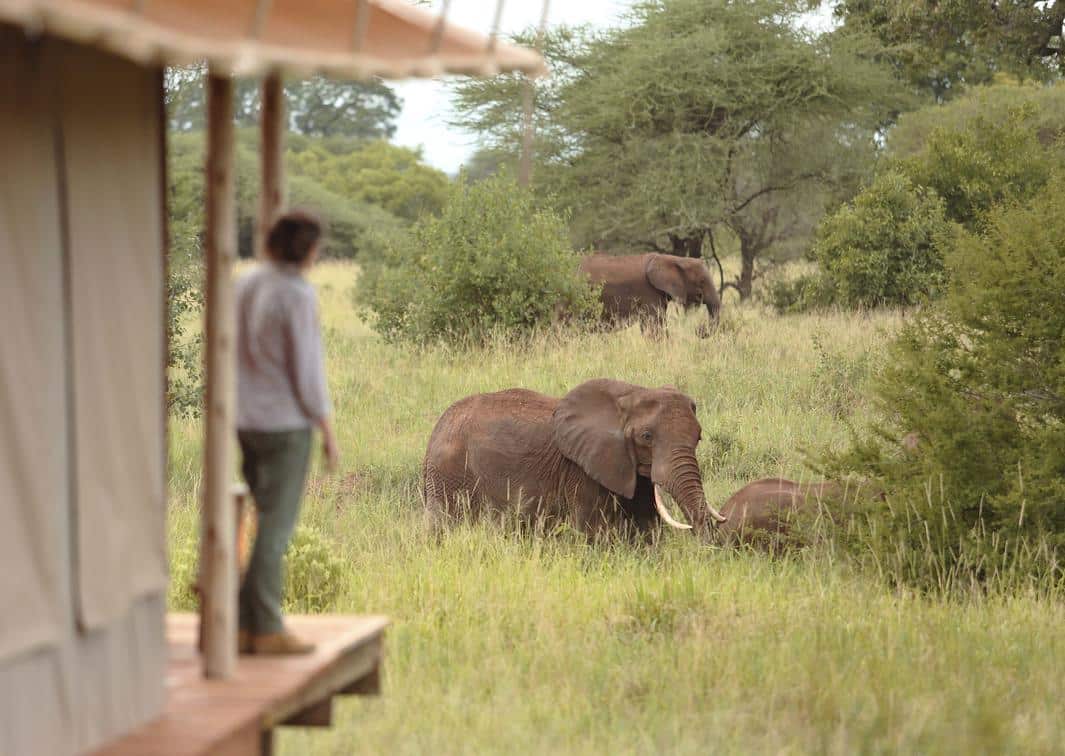
Certain months will undoubtedly be more appealing than others when planning a Tanzania travel itinerary centred on observing wildlife and visiting natural wonders. The best month for a Tanzania safari depends on your specific interests and desired experiences. Let’s explore what each month offers for those embarking on Tanzania safari tours.
January is an excellent time to go on a safari in Tanzania. The weather is comfortably warm, with average daytime temperatures ranging from 26-30°C and nighttime temperatures from 20-23°C. January marks the peak of summer in Tanzania, which is predominantly dry, making it ideal for safaris. Heavy rains don’t start until March; only brief showers occur at night. The conditions are perfect for game viewing, with about 10 hours of sunshine daily.
Overall, the excellent weather, abundant wildlife, and cultural experiences make January ideal for a Tanzanian safari.
Daytime Temperatures: Around 29°C
Nighttime Temperatures: Around 26°C
Average Rainfall: 120 mm
As part of the African summer, February in Tanzania is pleasantly warm, making it an ideal time to visit. Despite the possibility of occasional nighttime rain, the conditions remain favourable for exploration.
February falls within the shoulder season, nestled between the peak tourist months of December and January and the quieter season from March to May. This makes February an optimal time to discover Tanzania’s tourist attractions.
Here are a few compelling reasons to consider scheduling your Tanzanian adventure in February:
Day Temperature: 28-31°C
Night Temperature: 22-25°C
Rainfall: 170 mm
In early March, Tanzania experiences weather similar to February, with warm temperatures marking the end of the short, dry summer season. By mid-month, the Masik or long rainy season begins, bringing higher humidity and warmer days, while nighttime temperatures drop significantly, often by nearly 10°C. Heavy rainfall becomes more common in the latter half of the month, typically occurring in the mornings and followed by clearer, brighter afternoons. These rains refresh the landscape, settle dust, and improve visibility, creating an inviting atmosphere for exploration.
March is an excellent month for travelers seeking a unique and immersive experience in Tanzania.
March provides a distinctive opportunity to experience Tanzania’s natural beauty in a more tranquil and cost-effective way. The combination of fewer crowds, lush surroundings, and dramatic backdrops makes it an appealing time to visit.
April is one of the wettest months in Tanzania, with average daytime temperatures around 25°C and nighttime temperatures roughly 14°C. Rainfall is relatively high, averaging 240 mm. Due to the heavy rains and high humidity, many lodges close down, and most tourists tend to avoid this season. However, visiting Tanzania in April is still possible if you don’t mind muddy conditions and frequent downpours.
Fewer Crowds: From April to early June, there are significantly fewer tourists. This makes April a great time for those seeking a serene safari experience.
Bird Watching: The rainy season, especially April and May, is excellent for bird watching. You can spot various avian species in national parks, such as Tarangire.
Great Wildebeest Migration: Although seeing the “big five” animals in April might be challenging, you can still witness the Great Wildebeest Migration as the herds begin moving north and west from the southern Serengeti.
Cost Savings: April is also a more affordable time to visit. Many hotels and lodges offer discounts, allowing you to save money on your trip.
In summary, while April’s weather might not be ideal for everyone, it offers unique advantages for those willing to brave the rain.
April is one of the wettest months in Tanzania, with average daytime temperatures around 25°C and nighttime temperatures roughly 14°C. Rainfall is relatively high, averaging 240 mm. Due to the heavy rains and high humidity, many lodges close down, and most tourists tend to avoid this season. However, visiting Tanzania in April is still possible if you don’t mind muddy conditions and frequent downpours.
Fewer Crowds: From April to early June, there are significantly fewer tourists. This makes April a great time for those seeking a serene safari experience.
Bird Watching: The rainy season, especially April and May, is excellent for bird watching. You can spot various avian species in national parks, such as Tarangire.
Great Wildebeest Migration: Although seeing the “big five” animals in April might be challenging, you can still witness the Great Wildebeest Migration as the herds begin moving north and west from the southern Serengeti.
Cost Savings: April is also a more affordable time to visit. Many hotels and lodges offer discounts, allowing you to save money on your trip.
In summary, while April’s weather might not be ideal for everyone, it offers unique advantages for those willing to brave the rain.
Day Safari to Saadani National Park Where the bush meets…
5 Days Luxury Honeymoon Beach Holiday in Zanzibar Romantic Island…
15 Days Tanzania Safari and Zanzibar Holiday Combined – Day-by-Day…
Exclusive Photographic Safari Experience This exclusive 14-day private photographic safari…
The exciting 5 days of Tanzania Lodge Safari from Zanzibar…
If you have limited time to plan the safari adventure…
June marks the onset of winter in Tanzania, extending through October, which is also the dry season. During this period, the weather remains dry and warm with infrequent rains.
Day Temperature: Around 30°C
Night Temperature: Approximately 20°C
Rainfall: 40 mm
June is an ideal time for a safari in Tanzania, offering spectacular wildlife sightings and the remarkable Great Migration. Some reasons why June makes for a beautiful safari experience:
June marks the onset of winter in Tanzania, extending through October, which is also the dry season. During this period, the weather remains dry and warm with infrequent rains.
Weather Overview:
June is an ideal time for a safari in Tanzania, offering spectacular wildlife sightings and the remarkable Great Migration. Why June makes for a beautiful safari experience:
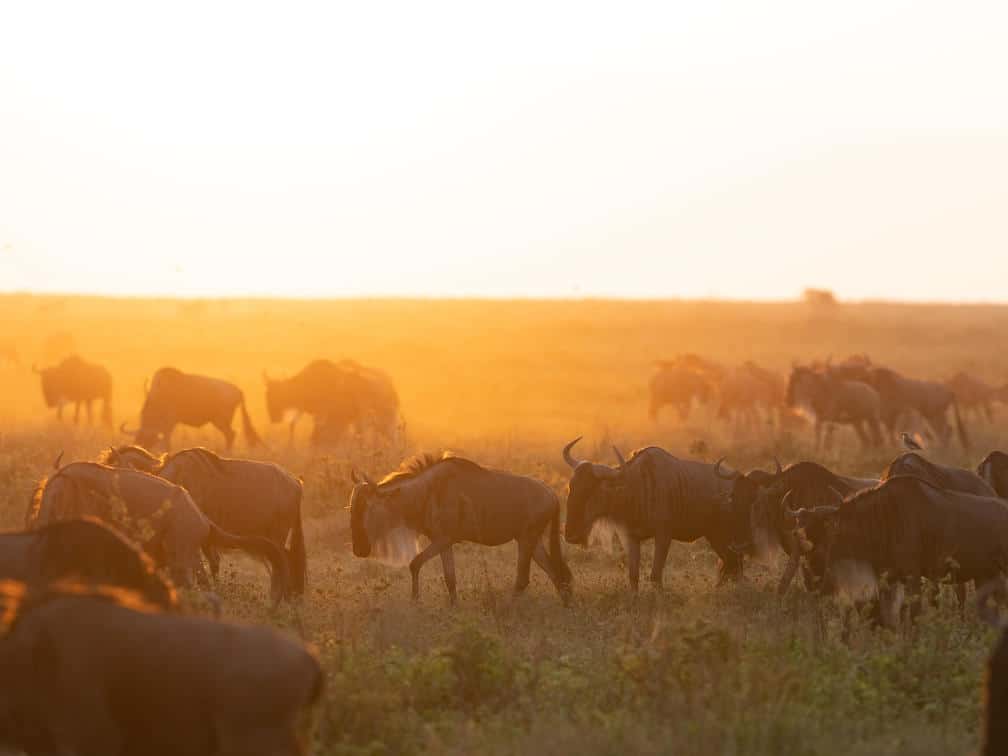
Day Temperatures: Between 27°C and 32°C
Night Temperatures: Between 15°C and 20°C
Rainfall: 30 mm
July is the heart of winter in Tanzania, offering fantastic weather ideal for a safari trip. The days are usually sunny, warm, and clear, making July the driest month in the country. This makes July often regarded as the best month to visit Tanzania. Tanzania in July can be an exciting adventure:
Prime Time for the Serengeti Wildebeest Migration: Mid-July is the best time to witness the Great Migration. This is when the herds start heading towards Kenya, offering a spectacular sight.
Easier Wildlife Spotting: The dry weather makes it easier to spot various animals, including zebras, gazelles, elephants, leopards, and lions.
Serengeti Cultural Festival: This annual event attracts people worldwide to Serengeti National Park and the Lake Zone, providing a unique cultural experience.
Beautiful Coffee PlantIPlantITanzania’snzania’snzania’se plantations are stunning. Coffee plants adorned with bright yellow and red ripe coffee cherries are visible.
With these highlights, July is an ideal time to explore Tanzania’s natural and cultural wonders.
August is a fantastic time for holidays in Tanzania. The weather is ideal for viewing wildlife, and there are higher chances of encountering the Big Five. Being part of the peak tourist season, Tanzania offers its visitors many attractions in August.
Why August is the Best Time to Visit Tanzania:
While the Tanzania safari cost in August might be slightly elevated due to the high season, the benefits of visiting during this time more than compensate for the increase.
September is an excellent time to visit Tanzania. The weather is warm and pleasant, with average daytime temperatures of 29°C and nighttime temperatures around 17°C. Rainfall is minimal, averaging only 20 mm, making it one of the best months to travel to Tanzania.
September falls within the dry season, perfect for outdoor activities like camping, wildlife safaris, and hiking. This month, along with July and August, is among the top months for a Tanzania Safari Tour. Although it is peak tourist season, meaning higher costs and more visitors, the experience is well worth it.
The reasons to visit Tanzania in September:
Despite the increased costs during peak season, we guarantee an enjoyable and unforgettable safari experience in September.
Visiting Tanzania in October is a great idea. October marks the end of the extended dry season, making it an excellent time for a visit, similar to the other winter months. The weather is pleasant, with average day temperatures around 30°C and cooler nights averaging 19°C. Although mornings can be chilly, the days are sunny and warm.
October is a great time to visit Tanzania:
If you’re planning a trip to Tanzania in October, you’ll have a variety of activities to engage in and enjoy the best of what this beautiful country has to offer.
November marks the onset of spring in Tanzania and ushers in the short rainy season. With average day temperatures of 30°C, night temperatures of 22°C, and 130 mm of rainfall, it’s essential to include rain protection gear in your packing list if you’re planning a safari in Tanzania this month.
Spring is when Tanzania is at its greenest. While the weather in November can be pretty wet with regular showers, these rains are often interspersed with bright and refreshing sunny days. According to our travel experts, November is also one of the best months to visit Tanzania.
So, despite the likelihood of showers, November offers unique experiences that make it an ideal time to visit Tanzania.
December is an excellent month for a safari in Tanzania. It offers warm and pleasant weather, with average daytime temperatures between 27-32°C and nighttime temperatures around 21°C. Rainfall is relatively low, about 130 mm, making it the ‘short rainy season’ with a slim chance of rain.
This time of year is particularly appealing for birdwatchers and wildlife enthusiasts. Here are a few reasons why December is ideal for a Tanzania safari:
Overall, the warm, sunny weather and the vibrant wildlife activity make December one of the best times to explore Tanzania through a safari.
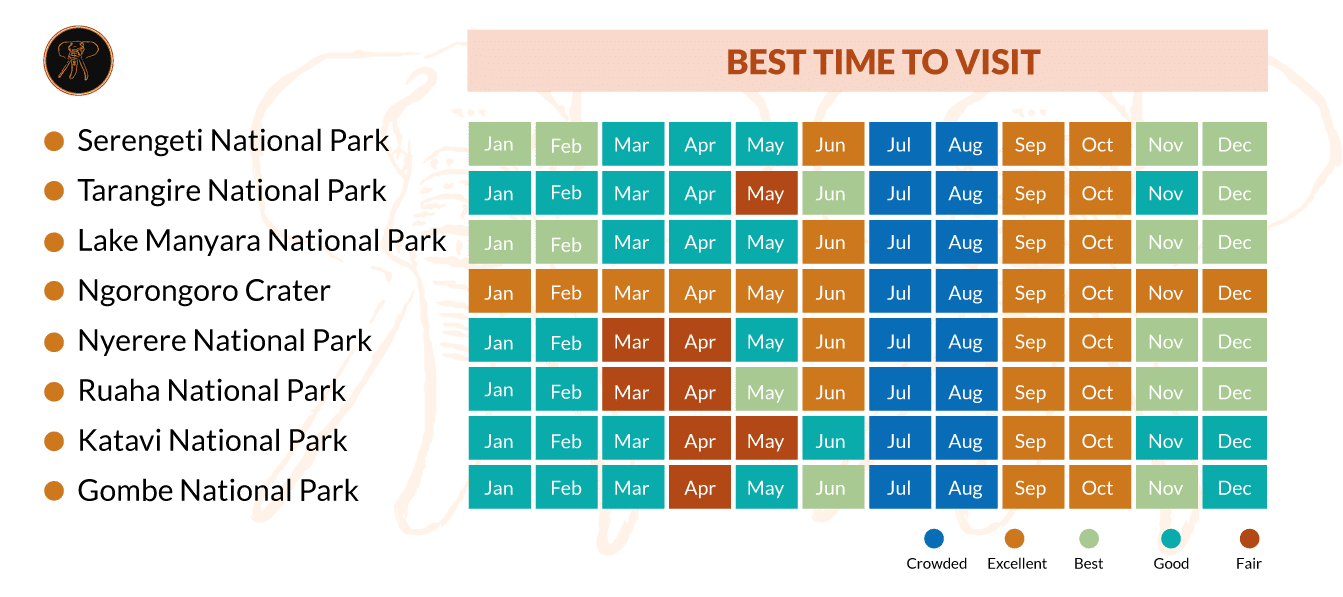
Tanzania offers diverse safari experiences throughout the year, each with unique attractions and characteristics. Understanding the different safari seasons can help travellers determine the best time to visit. The Tanzania Safari Season is categorized into two main types:
Tourism Peak: These months attract the highest number of tourists due to excellent weather and high animal visibility.
Weather: The climate is cool, dry, and predominantly sunny, creating ideal safari conditions.
Wildlife Viewing: This is considered the best time to observe wildlife, as animals gather around water sources.
Crowds and Costs: National parks can be crowded, and accommodation prices are at their highest during this period.
Transitional Period: Tourist numbers decrease, leading to moderate crowds and moderate animal visibility.
Weather: Generally hot with occasional short rains (“mvuli”), accompanied by the “kusi” trade wind from late October.
Highlights: The wildebeest calving season in the Serengeti is a major attraction.
Pricing: Costs are reduced, except during the peak mid-December to mid-January holiday period.
Rainy Season: Heavy rains result in muddy roads and limited access to some safari areas.
Benefits: Enjoy discounted accommodation rates and fewer crowds in northern safari parks.
Bird-Watching: A prime season for bird enthusiasts, with abundant birdlife and migratory species.
Tanzania experiences two primary climatic periods: the dry and wet seasons. Each is further divided into long and short seasons, which impact wildlife behaviour and landscape appearance. Understanding these seasons will help you determine the best time to visit Tanzania for your trip.
| Feature | Description |
|---|---|
| Weather | The transition between the short and long rainy seasons; some rain is possible but has minimal impact on safaris. |
| Landscape | Clear and vibrant landscapes from the preceding short rains. |
| Activities | It is ideal for photographic safaris due to its vivid colours. |
| Wildlife | birdwatching season with migratory birds arriving. |
| Feature | Description |
|---|---|
| Weather | Consistent, substantial rainfall. |
| Conditions | Challenging safaris due to deteriorating roads and dispersed wildlife. |
| Activities | Remarkable predator-prey activities despite harsh conditions. |
| Feature | Description |
|---|---|
| Weather | Minimal rainfall; clear and sunny days. |
| Conditions | Peak travel season. |
| Wildlife | Animals congregate around water sources, making wildlife viewing predictable and frequent. |
| Special Events | Best time for Serengeti Wildebeest Migration, especially the Mara River crossing (August-September). |
| Feature | Description |
|---|---|
| Weather | Short rains; less heavy than long rainy season. |
| Conditions | Unpredictable precipitation varies yearly. |
| Activities | Enjoyable safaris with lush landscapes and fewer tourists. |
| Dry Season | Pros | Cons |
|---|---|---|
| Wildlife | Easier spotting around water sources. | Crowded parks reduce exclusivity. |
| Health | Lower mosquito populations, reducing malaria risk. | |
| Weather | Clear skies and minimal rain ensure smooth safari experiences. | The scenery can appear barren. |
| Travel | Higher accommodation costs; booking in advance is advisable. |
| Wet Season | Pros | Cons |
|---|---|---|
| Landscape | Lush, green backdrops for photos. | Heavy rain can impact game drives and activities. |
| Wildlife | Idealbirdwatching with migratory birds. | Increased mosquitoes, raising malaria risk. |
| Experience | More exclusive and peaceful safaris with fewer tourists. |
Understanding the distinct characteristics of each season can help you plan the perfect trip to Tanzania tailored to your preferences and expectations.

| National Park | Best Time to Visit |
|---|---|
| Serengeti | June – October (General wildlife viewing) December – March (Calving Season) July – September (River Crossing) |
| Ngorongoro Crater | June – October (General wildlife viewing) December – March (Green season for beautiful scenery) |
| Tarangire | June – October (Dry season, general wildlife viewing) November – May (Bird watching) |
| Lake Manyara | June – October (Dry season, general wildlife viewing) November – May (Bird watching) |
| National Park | Best Time to Visit |
|---|---|
| Mahale Mountains National Park | May – October, Mid-December – February (Chimpanzee tracking) |
| Gombe Stream | May – October, Mid-December – February (Chimpanzee tracking) |
| Katavi | June – October (Dry season, general wildlife viewing) |
| National Park | Best Time to Visit |
|---|---|
| Ruaha National Park | June – October (Dry season, general wildlife viewing) November – May (Bird watching) |
| Selous Game Reserve | June – October (Dry season, general wildlife viewing) November – May (Bird watching) |
| Mikumi National Park | June – October (Dry season, general wildlife viewing) November – May (Bird watching) |
| National Park | Best Time to Visit |
|---|---|
| Saadani National Park | June – October (Dry season, wildlife viewing) November – April (Bird watching) |
| Udzungwa Mountains | June – October (Dry season, wildlife viewing) November – May (Bird watching and waterfall viewing) |
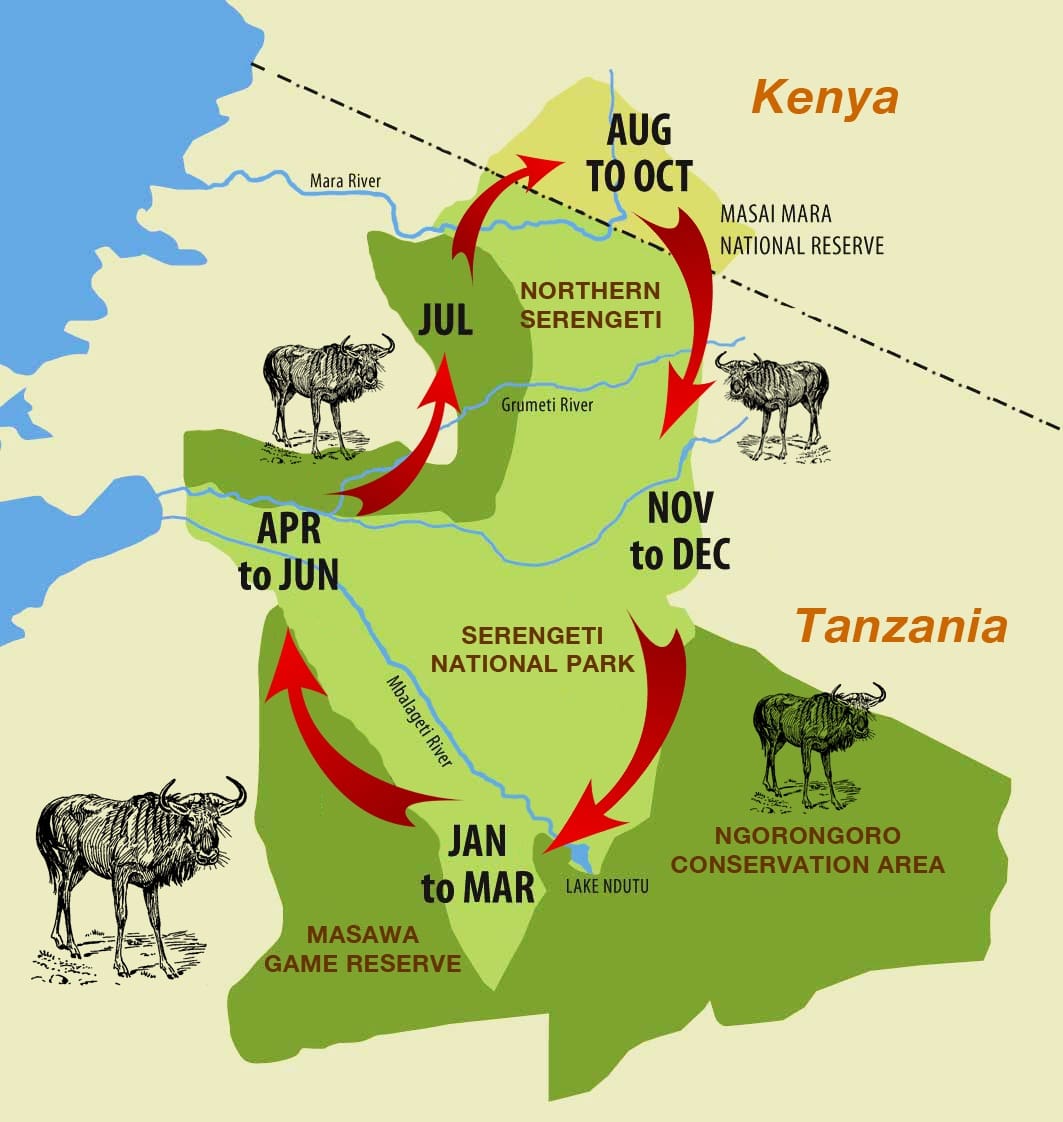
The Great Wildebeest Migration in Tanzania is a must-see. This massive animal migration is a natural wonder and a significant draw for visitors to Tanzania. Although the migration occurs year-round, each season offers unique sights. To witness the migration in all its glory, plan your visit from mid-July through mid-September, which is often considered the best time for a safari in Tanzania.
As the herds move in response to the rains, the best locations to observe the wildebeest migration change throughout the year. Below is a table summarizing the times of the year when you can expect to see wildebeest activities.
| Month | Wildebeest Activities |
|---|---|
| December to March | The Great Migration Calving Season in Southern Serengeti |
| April to May | The wildebeests move from Ndutu to central Serengeti |
| June | Grumeti River Crossings in western Serengeti |
| July to August | The Great Migration Mara River Crossing |
| September to October | Wildebeest in Northern Serengeti |
| November | Central to Southern Serengeti |
Optimal Months: May, June, July, October
The best time to visit Tanzania for chimpanzee trekking is from May to October, which overlaps with the start of the dry season. During this period, you can encounter chimpanzees in the Mahale Mountains and Gombe Stream National Parks. The trekking experience is more manageable, as chimpanzees are often found on the lower slopes. However, from November to April, the wet season makes the trails slippery, making it less ideal for chimpanzee trekking.
Optimal Months: June, July, August, September, October
The best time for game drives in Tanzania is from June to October in the dry season. Wildlife congregates near water sources, and the shorter grass improves visibility, making it easier to observe animals. The clear skies and pleasant weather during this period also enhance the safari experience.
Optimal Months: July, August, September, October
Walking safaris in Tanzania is best during the dry season from July to October when the terrain is dry and easier to navigate. The thinner vegetation during these months makes spotting animals from a distance easier. While walking safaris are possible year-round, the rainy season brings muddy terrain, making them less ideal.
Optimal Months: December, January, February
Tanzania is a birdwatching paradise, with the best time being from December to February when migratory birds are present. The lush vegetation during these months creates a favourable environment for birds. Birding safaris can be enjoyed year-round, offering a unique experience each season.
Optimal Months: June, July, August, September, early October
The dry season from June to October is the best time for family safaris in Tanzania. The pleasant weather and easier animal spotting make it ideal for families. Many lodges and camps offer family-friendly activities such as nature walks and cultural visits during this period. For a personalized family safari experience, consider the Family Bush Beach Safari package.
Optimal Months: June, July, August, September
Tanzania offers a romantic safari getaway for couples, with the best time being during the dry season from June to October. This period’s perfect weather and breathtaking scenery make for an unforgettable experience. Couples can enjoy private game drives, intimate bush dinners, and luxurious accommodations with stunning views.
In Tanzania, there are two major tourism seasons that define the Safari timing. The High Season or the peak season from June To October means more visitors and excellent game-viewing opportunities. The low or green season from November to December and January to march means short and long rain. You will find fewer visitors, lush vegetation, and fewer wildlife game during this time of the year.
The best time to explore the beaches of Zanzibar is during the archipelago’s dry season runs between July to September. This is a very comfortable time to travel to Zanzibar. However, the temperature remains between 28 °C and 34°C with clear and dry weather.
The weather during the dry season is generally dry and sunny with comfortable temperatures.
The wet season in Tanzania runs from November to May and is characterized by rain and high humidity.
During the dry season, wildlife is easier to spot as animals congregate around water sources. The skies are clear, making it ideal for photography and hot-air ballooning.
The dry season is peak season, so there will be more tourists and higher prices.
The wet season is the low season, so there will be fewer tourists and lower prices. The landscape is lush and green, making for beautiful scenery.
The wet season can make wildlife viewing more challenging due to dense vegetation and muddy roads. There is also a higher risk of mosquito-borne diseases such as malaria.
The shoulder season in Tanzania is from January to March and from November to December. It is a good time to visit as it is not as busy as the peak season, and the weather is generally good.
The Serengeti Wildebeest Migration is an annual event in which millions of wildebeest, zebras, and gazelles migrate from the Serengeti National Park in Tanzania to the Masai Mara National Reserve in Kenya. It takes place from July to October.
The temperature during the dry season in Tanzania is warm and comfortable, with temperatures ranging from 20°C to 30°C.
The temperature during the wet season in Tanzania is hot and humid, with temperatures ranging from 25°C to 35°C.
The most budget-friendly time to visit Tanzania is during the rainy season, from March to May, with April being the cheapest month. During this period, Safaris in Tanzania is more affordable and hotels often offer substantial discounts. So, if you’re seeking a less expensive safari experience, plan your visit to Tanzania between March and May.
The Best time for a Safari in Tanzania is during the dry season, from June to October. During this time, wildlife tends to congregate around water sources, making it easier for you to spot them.
Tanzania experiences a high degree of seasonality in tourism, with two main peak seasons and a shoulder season.
The Best Time to Visit Tanzania for wildlife is during the dry season, which runs from June to October. During this time, the weather is clear and sunny, and the animals are easier to see as they gather around water sources.
The Best Time of Year to Travel to Tanzania to see the Great Migration in Serengeti is during the dry season, which runs from June to October. And, for witnessing the dramatic river crossing across the Grumeti River, visit Serengeti in June or July.
The Best Time to Visit Ngorongoro Crater depends on your priorities. If you want to see the most animals, the dry season (June to October) is the best time to go. The animals are easier to spot as they congregate around water sources, and the weather is clear and sunny. However, this is also the most popular time to visit, so the park can be crowded.
Absolutely, July is one of the Best Times to Visit Tanzania. Not only is the weather pleasant, but you also get to witness the incredible spectacle of the wildebeest migration.
If bird-watching safaris are on your agenda, the wet season, from November to April, is the best time. This period aligns with the migration of hundreds of bird species, making it a birder paradise.
The peak season to visit Tanzania National Parks aligns with the dry season, from late June to October. The animals are easier to spot as they gather around watering holes, and the weather conditions are generally more comfortable for visitors.
Witnessing the Grumeti River crossings, a spectacle of the Great Wildebeest Migration typically happens within a brief period in May and June. However, pinpointing the exact timing proves challenging as the migration patterns are closely tied to the rainfall. Consequently, the event’s timing can vary from year to year.
